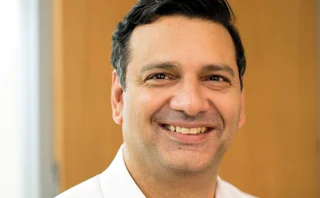
Marriage counselling: the risks of software vendor mergers
The risk technology space has seen a spike in merger and acquisition (M&A) activity, with more deals to come – but while consolidation offers real benefits for banks and other customers, M&As can also cripple good products and harm customer service. Users can manage these risks by being more proactive. Clive Davidson reports

Marry in haste, repent at leisure – or so the saying goes. But in the case of marriages between risk software firms, the clients can also end up repenting.
“Buyers and users of risk technology need to be aware of mergers and acquisitions (M&As),” says Peyman Mestchian, managing partner at London-based Chartis Research, a research and advisory firm covering the risk technology market. “Whether the deal is strategic or opportunistic, post-acquisition execution is not always done well. In some
Only users who have a paid subscription or are part of a corporate subscription are able to print or copy content.
To access these options, along with all other subscription benefits, please contact info@risk.net or view our subscription options here: http://subscriptions.risk.net/subscribe
You are currently unable to print this content. Please contact info@risk.net to find out more.
You are currently unable to copy this content. Please contact info@risk.net to find out more.
Copyright Infopro Digital Limited. All rights reserved.
You may share this content using our article tools. Printing this content is for the sole use of the Authorised User (named subscriber), as outlined in our terms and conditions - https://www.infopro-insight.com/terms-conditions/insight-subscriptions/
If you would like to purchase additional rights please email info@risk.net
Copyright Infopro Digital Limited. All rights reserved.
You may share this content using our article tools. Copying this content is for the sole use of the Authorised User (named subscriber), as outlined in our terms and conditions - https://www.infopro-insight.com/terms-conditions/insight-subscriptions/
If you would like to purchase additional rights please email info@risk.net
More on Risk systems
Identity verification solutions 2023: market and vendor landscape
This report analyses the current identity verification solutions landscape and examines the key market trends, regulatory drivers and vendor strategies shaping it
Taking the lead on financial crime regulatory compliance
Increased scrutiny of anti-money laundering and customer due-diligence procedures means banks must create more efficient and effective systems. A recent webinar conducted by Risk.net and IBM discussed how leading banks are utilising artificial…
AI wide open
The Risk Technology Awards 2018 have highlighted how new technologies are bringing recognition for vendors
Murex moves flagship trading and risk system on to cloud
Vendor expects more demand from squeezed banks; move also hints at modular future for risk systems
Sponsored video: Philip Moyer, Amazon Web Services
Philip Moyer, Enterprise Cloud and Financial Technologies, Amazon Web Services, discusses the biggest government, regulatory and compliance (GRC) challenges organisations face today, how moving to the cloud can help firms prevent potential cyber attacks…
Cloud control
Sponsored feature: OpenLink
Algorithmic execution: Harnessing technology to manage risk
Sponsored feature: HSBC
Interview: Zar Amrolia on liquidity provision
Former co-head of Ficc at Deutsche Bank believes non-banks will become essential source of liquidity for banks
Most read
- Too soon to say good riddance to banks’ public enemy number one
- Basel III endgame: why moving fast might prove better for banks
- Breaking out of the cells: banks’ long goodbye to spreadsheets







